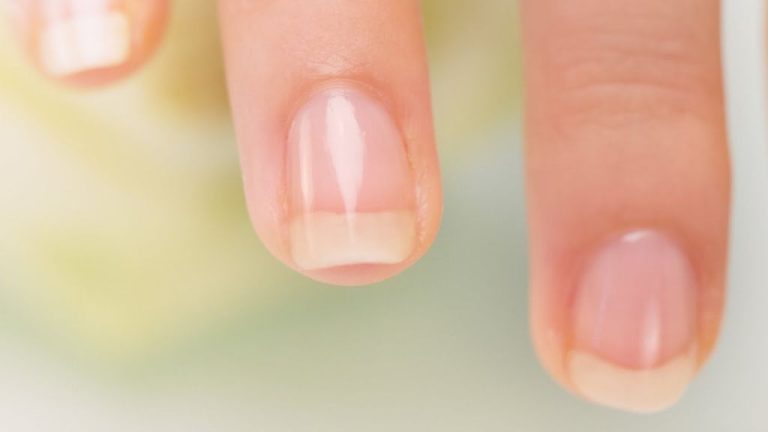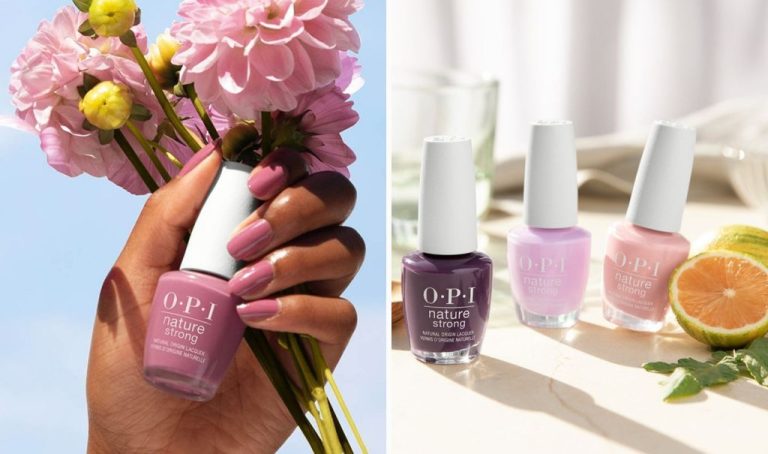From Nature To Nails: Exploring Eco-Friendly Polish Options
Eco-friendly and non-toxic nail polish has exploded in popularity over the past several years. As consumers become more aware of potentially harmful chemicals used in conventional nail polishes, brands have emerged to offer plant-based, mineral-based, and other non-toxic formulas. Major nail polish companies like OPI and Essie have also released eco-friendly lines in response to rising demand. The trend towards green nail products shows no signs of slowing down. This article will explore the world of eco-friendly nail polish – from the ingredients, to the top brands, the pros and cons, and the innovations happening in sustainable manicures.
Harmful Ingredients in Traditional Nail Polishes
Many conventional and salon nail polish brands contain concerning ingredients that can pose health and environmental risks. The top 3 toxic ingredients to avoid are:
Formaldehyde
Formaldehyde is added to nail polishes to harden them and provide durability. However, exposure to formaldehyde is linked to cancer, allergies, asthma, and other health issues (source). When formaldehyde is used in nail polish, it can be inhaled or absorbed through the nails and skin. For this reason, conventional polishes containing formaldehyde should be avoided.
Toluene
Toluene is a solvent used to enhance application and shine of nail polishes. However, chronic exposure is associated with kidney and liver damage, headaches, dizziness and reproductive issues (source). Toluene is also dangerous for the environment and is toxic to aquatic life.

Dibutyl Phthalate
Dibutyl phthalate (DBP) helps prevent chipping in nail polish. However, DBP is considered a developmental and reproductive toxicant and is banned from cosmetics in many countries. Exposure to DBP can cause hormone disruption and other adverse effects (source).
What Makes a Nail Polish Eco-Friendly?
Eco-friendly nail polishes are formulated to be less harmful to human health and the environment. Some key characteristics that make a nail polish eco-friendly include:
Natural Ingredients – Many eco-friendly polishes use plant-derived ingredients like corn, potato, rice, and cassava as a base, rather than harsh chemicals. They may also contain extracts from fruits, flowers, and herbs for added benefits.
Vegan Formula – Most eco-friendly polishes avoid animal-derived ingredients like beeswax, carmine, gelatin, and keratin. This makes them appealing to vegans and vegetarians.
Free of Toxic Chemicals – Eco-friendly polishes avoid ingredients like formaldehyde, toluene, and phthalates that are found in traditional polishes. These chemicals are linked to health issues [1].
Biodegradable – Many eco-friendly nail polishes break down more readily in the environment compared to traditional polishes that can be harder to decompose.
Non-toxic to Aquatic Life – Standard nail polishes can be toxic to fish and other marine life. Eco-friendly polishes are designed to have less impact on water ecosystems.
Sustainable Packaging – Some brands use recycled materials and minimal packaging to reduce waste. For example, water-based formulas allow for glass bottles to be reused.
Plant-Based and Mineral-Based Formulas
Many eco-friendly nail polishes use plant-based ingredients as a base rather than harsh chemicals. For example, corn, potatoes, and water are commonly used to create the liquid base that gives nail polish its smooth consistency. These plant extracts are natural, non-toxic, and biodegradable. Brands like KBShimmer use a corn-based formula.
Other polishes rely on minerals to provide COLOR and texture. Minerals like mica can add shimmer, while iron oxides provide rich, vivid pigment. Bamboo charcoal has oil-absorbing properties to help polish dry quickly. Brands like Butter London use a mineral-based formula for a high shine finish.
Plant-based and mineral formulas allow brands to create nail polish without harsh chemicals like formaldehyde, toluene, and dibutyl phthalate. The resulting polishes are less toxic and better for natural nail health.
Top Eco-Friendly Brands
In recent years, more and more nail polish companies have been developing eco-friendly formulas. Some of the most popular eco-friendly nail polish brands include:
Zoya – According to their website, Zoya nail polishes are Vegan, 10-Free, and made in the USA. Their polishes are formulated without formaldehyde, formaldehyde resin, camphor, toluene, dbp, xylene, parabens, ethyl tosylamide, and animal derived ingredients or byproducts (https://www.zoya.com/content/category/Eco-Friendly-Nail-Polish.html). Zoya uses plant-based ingredients and their bottles are made with recycled glass.
Kure Bazaar – This brand uses plant-based ingredients for their polishes, which are vegan, cruelty-free, and 10-free. Their formulas contain no animal products or byproducts, and they use recycled packaging. Kure Bazaar aims to create nail lacquer “free of harsh chemicals in chic, fashion-forward colors” (https://kurebazaar.com/pages/our-promise).
Ella+Mila – According to their website, Ella+Mila polishes are vegan, cruelty-free, and 7-free. Their formulas do not contain formaldehyde, toluene, dbp, formaldehyde resin, camphor, xylene, or ethyl tosylamide. Ella+Mila uses recycled glass bottles and plant-based ingredients (https://ellanailpolish.com/pages/ingredients-and-facts).
Benefits of Eco-Friendly Polishes
Eco-friendly nail polishes offer many benefits over traditional polishes.
First, they are made with non-toxic, sustainable materials like plants, minerals, and water. Traditional nail polish contains ingredients like formaldehyde, toluene, and phthalates that are known toxins and can cause issues like headaches, asthma, and hormone disruption (https://www.thegoodlifewithamyfrench.com/post/the-ultimate-guide-to-eco-friendly-nail-polish-how-to-keep-your-nails-beautiful-and-the-environment). Eco-friendly polishes avoid these ingredients, making them safer for the body.
Second, most eco-friendly brands do not test on animals, making their products cruelty-free. Major traditional polish brands do conduct animal testing, which is inhumane. Eco-friendly options provide glossy, vibrant nails without harming animals.
Finally, eco-friendly polishes have a lower environmental impact. Their formulas avoid toxic chemicals that can pollute waterways and the atmosphere. Sustainable packaging like glass bottles and biodegradable materials also reduce waste versus traditional plastic bottles and components (https://www.peacewiththewild.co.uk/your-guide-to-eco-nailpolish/). Eco-friendly polish helps you make a difference through your beauty routine.
Drawbacks of Eco-Friendly Polishes
While eco-friendly polishes have many benefits, they also come with some drawbacks compared to traditional formulas. The biggest downside is often the higher cost. Eco-friendly brands tend to be priced higher than drugstore polishes. For example, brands like Pacifica and Sophie + Toffee retail between $10-$18 per bottle. This is because natural, plant-based ingredients typically cost more than synthetic ingredients. Additionally, eco-friendly brands tend to be smaller and less mass-produced than bigger beauty brands.
The formulas of eco-friendly polishes also have some limitations compared to regular polishes. For example, many green polishes take longer to fully dry and harden. They also tend to be thinner in consistency. And the color payoff is sometimes not as opaque or rich as traditional polishes with more pigments and dyes. Shelf life can be another drawback. Eco-friendly formulas must omit the stabilizing chemicals found in regular polish, so they may go bad more quickly.
How to Apply and Remove Eco-Friendly Polish
Applying and removing eco-friendly nail polish requires some special considerations compared to traditional polishes.
When applying eco-friendly polish, it’s important to use thin coats and allow each layer to dry completely before adding the next. This prevents streaking and helps the polish adhere better. A good rule of thumb is to wait 5-10 minutes between coats. It’s also recommended to apply a base coat first to protect the nails and help the polish last longer. According to The Good Life with Amy French, “This will help prevent streaks and smudges which can happen if you apply too thick of a coat or don’t allow adequate drying time.”
For removal, look for plant-based, acetone-free nail polish removers. These are less drying to the nails and skin. You can also try using reusable remover pads, which cuts down on waste. When removing eco-friendly polish, take your time and gently rub the cotton pad over nails in a circular motion until the polish starts to lift. It may take a little more effort compared to removing traditional polish. Avoid pulling or peeling off the polish, as this can damage the nails. After removing polish, wash hands with soap and water to remove any residue.
No matter what eco-friendly brand you use, be sure to follow the application and removal tips for best results. With a little patience, your green polish can look great and last.
The Future of Green Nail Products
As consumers become more conscious of the ingredients in beauty products, the eco-friendly nail polish market is poised for significant growth. Analysts predict the global market for natural nail products will expand at a compound annual growth rate of over 7% from 2022-2027.[1] Several factors are fueling this market expansion:
Technological innovations are making plant-based formulas even more effective and long-lasting. Brands are finding ways to achieve the same high-shine finishes and durability as traditional lacquers using natural waxes, clays, and resins. Improved formulas are also allowing for more vibrant, on-trend shades. For example, many brands now offer eco-friendly gel polish that rivals the wear time of UV/LED gel.
Manufacturing advancements are also enabling brands to scale production of eco-friendly nail lacquers while keeping prices affordable. As more brands enter the green nail polish space, competitive pricing and product availability will continue improving.
With growing consumer awareness and interest in clean beauty, demand for natural nail products is rising globally. Brands are responding by expanding their cruelty-free, vegan collections and making sustainable polishes accessible through more retail channels.
In the future, expect to see more salons offering plant-based polish services as client preferences shift. Brands may also explore innovative packaging made from recycled and renewable materials to further reduce environmental impact.
The green nail category shows no signs of slowing down. As technology develops further, eco-conscious consumers can anticipate an even wider selection of sustainable yet fashionable nail lacquer options.
[1] Natural Cosmetics Market: Global Industry Trends, Share, Size, Growth, Opportunity and Forecast 2022-2027. (2021). Retrieved from https://www.imarcgroup.com/natural-cosmetics-market
Conclusion
In conclusion, eco-friendly nail polishes provide a great alternative to traditional polishes made with harsh chemicals. The top green nail polish brands use plant-based, mineral-based, or water-based formulas to create beautiful, vibrant colors without the use of toxic ingredients like formaldehyde, toluene, and phthalates. While eco polishes may take some getting used to in terms of application and wear time, the benefits for health and the environment make them worth exploring.
The key takeaways are:
- Traditional polishes contain many harmful ingredients that are toxic and can cause health issues.
- Eco-friendly polishes use natural, non-toxic ingredients and avoid chemicals of concern.
- Leading green nail polish brands like Zoya, Sundays, and Olive & June offer excellent cruelty-free, vegan options.
- Plant-based and mineral-based formulas are common bases for eco-friendly polishes.
- Eco polishes are better for your health and the environment but may require more frequent applications.
- With proper application and removal, eco polishes can deliver a beautiful manicure.
As green chemistry continues to advance, eco-friendly nail products will only get better. With growing awareness of nail polish ingredients and their impacts, we can look forward to more sustainable options for gorgeous, guilt-free manicures.




